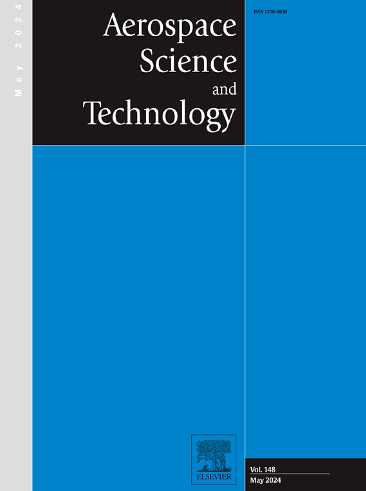Effect of wing sweep and asymmetry on flight dynamics of a sweep-morphing aircraft
IF 5
1区 工程技术
Q1 ENGINEERING, AEROSPACE
引用次数: 0
Abstract
Wing asymmetry plays a critical role in the flight dynamics of tube-launched sweep-morphing aircraft, particularly during missions requiring dynamic shape adaptations. Although previous studies on sweep-morphing wings primarily assumed symmetric left-right configurations, this research highlights the significant effects of inherent asymmetries on flight stability. Results indicate that wing asymmetry reduces lift due to a diminished fuselage upwash effect, with asymmetric wings generating lower lift than symmetric configurations. In longitudinal dynamics, asymmetric wings reduce both static and dynamic stability, with the phugoid mode being particularly sensitive to wing asymmetry. Conversely, in lateral-directional dynamics, wing asymmetry improves the stability of roll subsidence, Dutch roll, and spiral modes compared to symmetric configurations. This study systematically analyzes the impact of wing asymmetry on both aerodynamic performance and flight dynamics of sweep-morphing aircraft, providing new insights into stability characteristics and control requirements. The findings offer crucial guidance for designing agile and adaptive unmanned aerial vehicles (UAVs) with morphing wings, emphasizing the necessity of considering wing asymmetry in flight control strategies.
求助全文
约1分钟内获得全文
求助全文
来源期刊

Aerospace Science and Technology
工程技术-工程:宇航
CiteScore
10.30
自引率
28.60%
发文量
654
审稿时长
54 days
期刊介绍:
Aerospace Science and Technology publishes articles of outstanding scientific quality. Each article is reviewed by two referees. The journal welcomes papers from a wide range of countries. This journal publishes original papers, review articles and short communications related to all fields of aerospace research, fundamental and applied, potential applications of which are clearly related to:
• The design and the manufacture of aircraft, helicopters, missiles, launchers and satellites
• The control of their environment
• The study of various systems they are involved in, as supports or as targets.
Authors are invited to submit papers on new advances in the following topics to aerospace applications:
• Fluid dynamics
• Energetics and propulsion
• Materials and structures
• Flight mechanics
• Navigation, guidance and control
• Acoustics
• Optics
• Electromagnetism and radar
• Signal and image processing
• Information processing
• Data fusion
• Decision aid
• Human behaviour
• Robotics and intelligent systems
• Complex system engineering.
Etc.
 求助内容:
求助内容: 应助结果提醒方式:
应助结果提醒方式:


